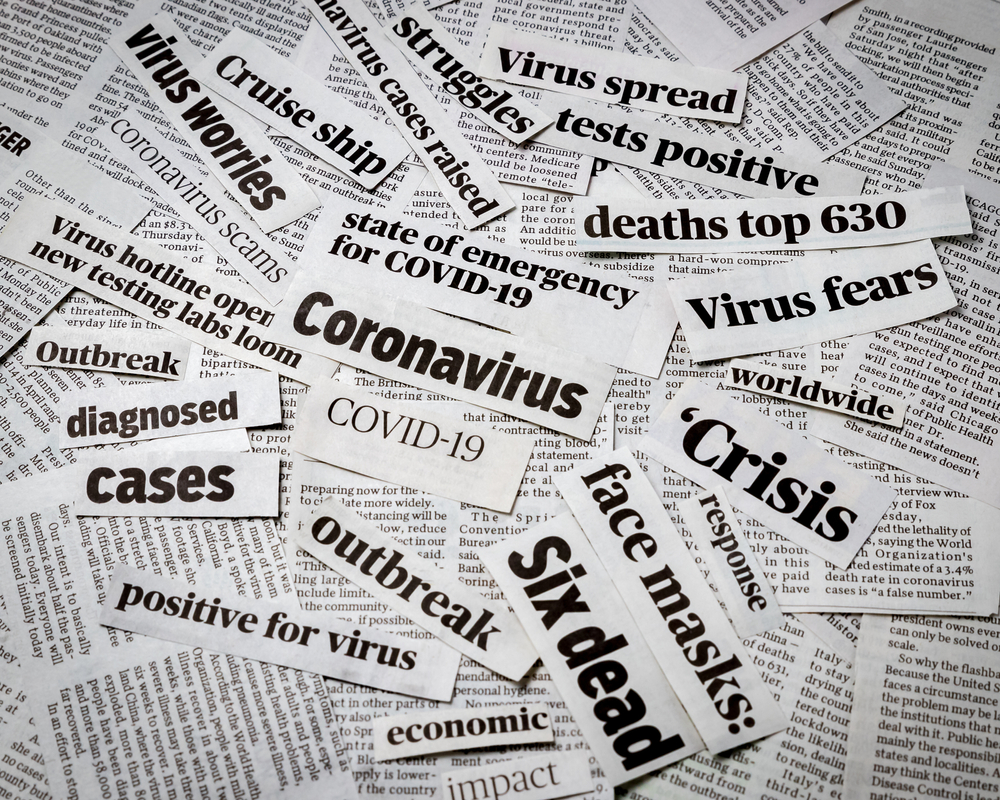For weeks, the top ten most-read stories on the BBC News website have been almost exclusively related to Coronavirus. As we enter phase 2 of the crisis, with the government making plans to ease lockdown restrictions and businesses making cautious plans to re-open, on what is the media focused?
Talking to our media training journalists and an analysis of the website home pages of some of Britain’s leading media outlets on one day – the 29th April – tells an interesting story.
Of the 51 stories on The Financial Times’ home page, 44 are coronavirus-related (86%). Unsurprising perhaps for a business and finance orientated publication given how hard those sectors have been hit by the crisis.
Yet the trusted public news brand that is the BBC presents its readers with a similar focus. At point of analysis, some 85% of the BBC News home page stories were coronavirus-related (11 out of 13) and all 17 of its business home page stories. Job cuts and the economic impact still dominate, but plenty of stories triggered by individual businesses to issues like the declining use of cash, likely reduction in office space and how to sell books during lockdown.
And what of the likes of The Times and the Daily Mail? The figures shrink significantly – many more non-pandemic stories given the number of pages to fill. On The Times’ news section home page, just 21 out of 46 stories (45%) relate to coronavirus while in the Daily Mail it is slightly higher at 53% (31 out of 58). Even my local paper, the Petersfield Post, has 12 coronavirus new stories out of a total of 21 (57%).
Many coronavirus stories are an opportunity for organisations to put their best foot forward; to demonstrate their commitment to broader society; and the ways in which they are using their products, skills and ingenuity to help the stakeholders and nation through the crisis.
A technology editor at the BBC is very happy to receive as many Covid-related technology stories as he can and the planning desk at GMB to hear from companies helping the NHS frontline. The Metro newspaper was pleased to report how fashion brand, Barbour, has turned its production line to the manufacture of medical gowns for hospital workers, linking it to the last time we were ‘all in it together’ during World War 2, evoking memories of the company’s manufacture of army garments.
But editors cannot and do not want to fill a whole paper or broadcast schedule with Coronavirus stories. With so much bad news, many of them are looking for uplifting, inspiring or quirky tales. National journalists writing about the arts, entertainment, science, social affairs, the environment, and even technology are all in the market for non-Covid news; as are trade journalists writing about people, companies, sectors, innovation and products.
The main problem for journalists though – as ever – is sifting through the self-serving press releases, the uncontentious and bland quotes, the tenuous connections made by PRs to the news agenda and the lack of concise, focused, engaging stories that sell themselves to a journalist still asking ‘so what?’.
So well done the RSPB for getting coverage for cranes returning to UK wetlands and the PR for Animal Dynamics, a company that applies the study of birds and insects to the design of drones, for getting coverage for Skeeter, a miniature drone with military applications powered by flapping wings. Uplifting news. If you’ll pardon the pun.

